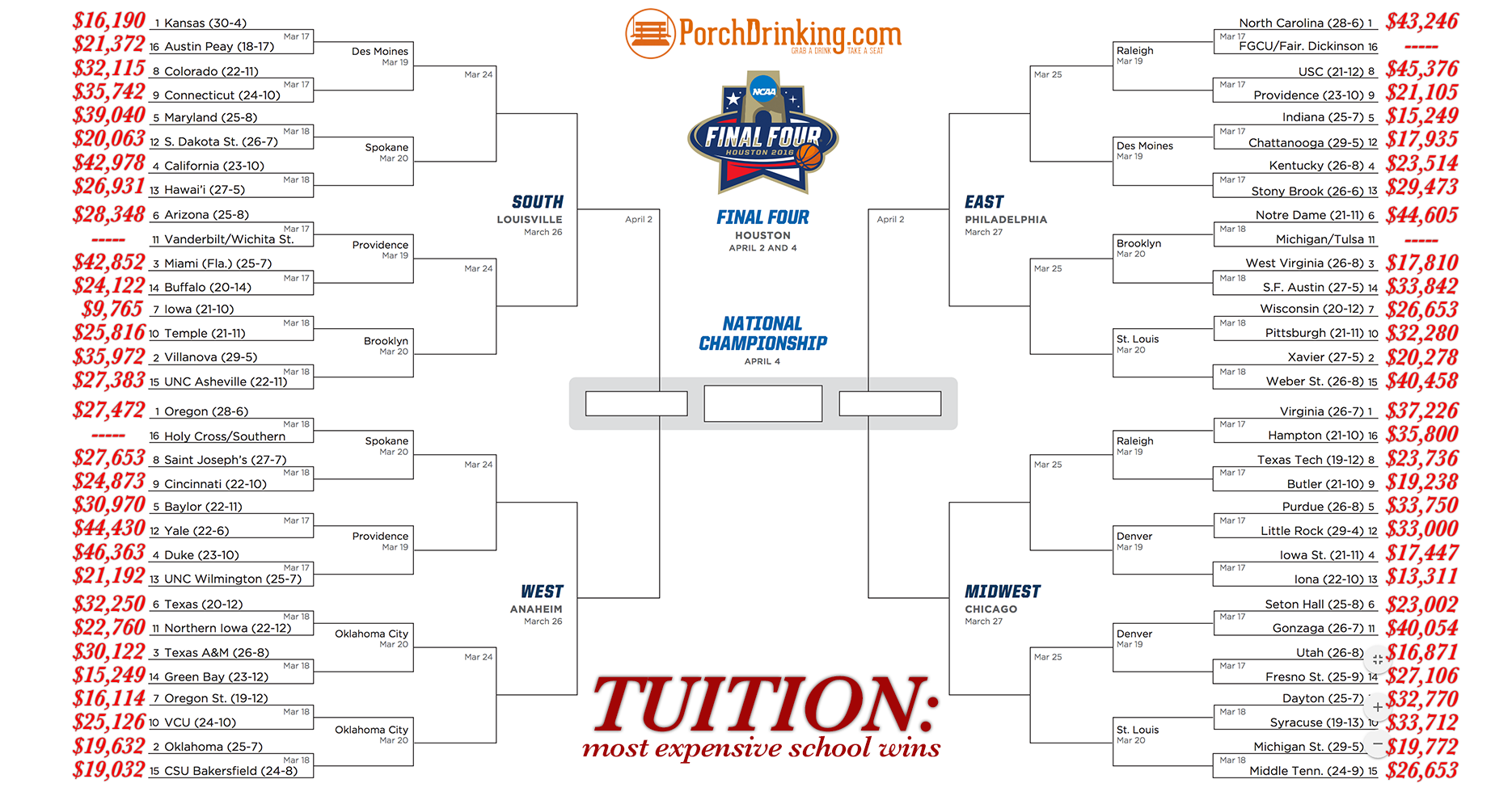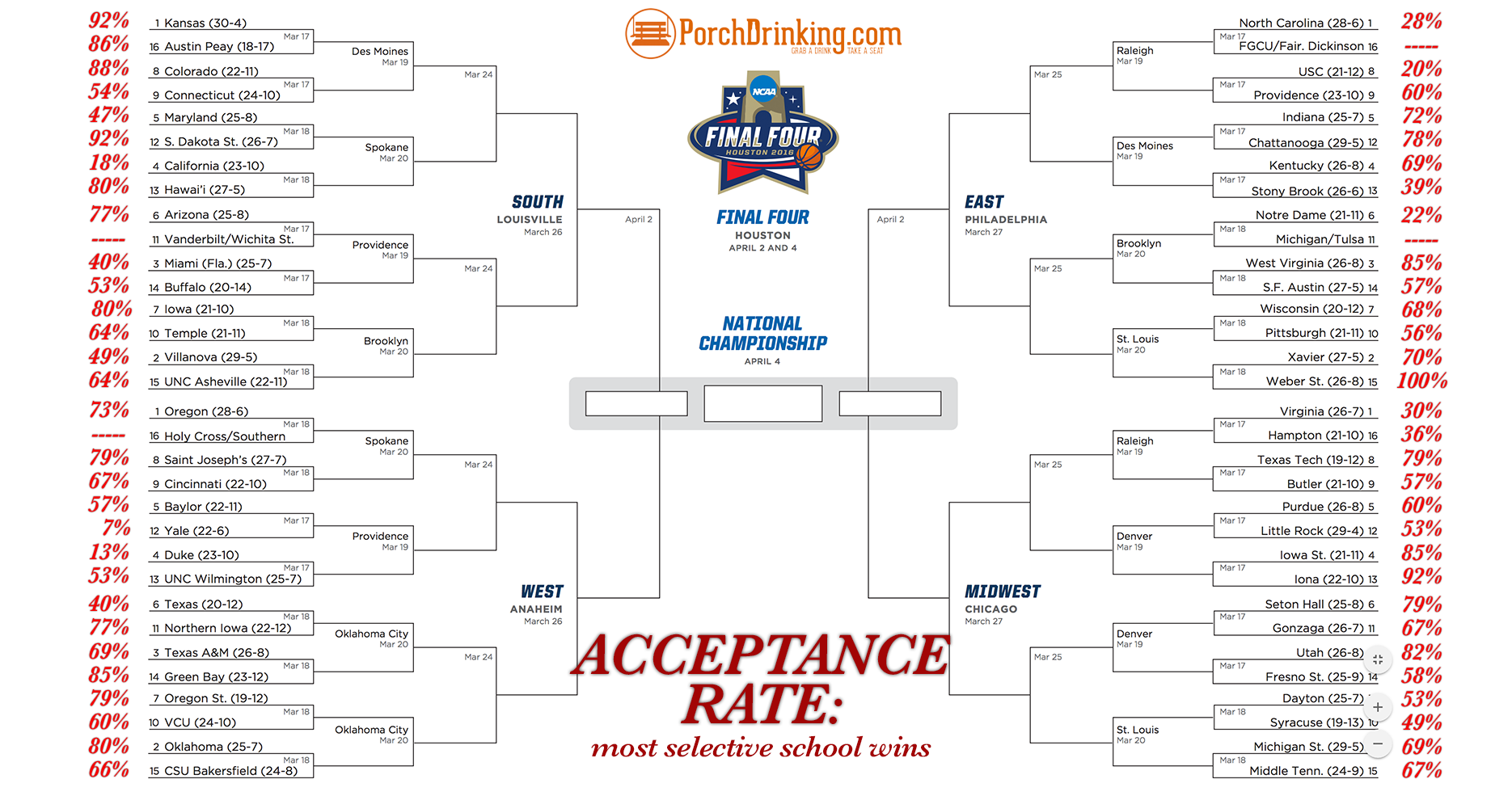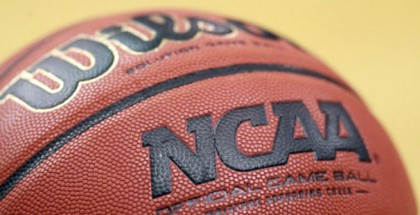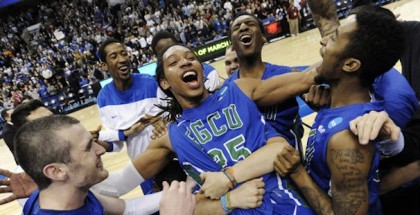Objective Bracketology: Be the Only One in Your Pool to Use These Methods
With March Madness kicking off this week, everyone is watching their brackets closely to see which teams will rise to the top of the NCAA tournament. From detailed player analysis to superstitious patterns, people spend a lot of time and energy coming up with the best angle for filling out a bracket so that they can win their March Madness pool
And then some other jerk who arbitrarily picked their teams wins.
So if you can’t beat them, join them, right? I’ve covered this in the past with brackets based on things like which team’s mascot would win in a fight, and a year later, which team’s school boasts the most famous alumni. Those brackets did not do well. There’s no reason to think that this year’s Mascot Madness will do any better. Maybe that’s because I used totally subjective judgments to determine who should win each match-up. Maybe what my bracketology needs is a conceit based on data with much more empirical value, but with the same basketball wisdom.
In other words, I came up with brackets that are objective, but have NOTHING to do with how well the teams play basketball.
I am for real entering these brackets in some public pools, just so I can see which strategy is most practical, and how many actual college basketball fans I can beat. If you really don’t know who to pick in your pool, give one of these brackets a shot. Give March a bit more Madness.
BRACKET 1: TUITION
Let’s take a look at how much these schools cost. College is expensive, right? I looked up the average out-of-state tuition for all teams in the NCAA tournament (except for the play-in teams.) Here’s the result:
Now, if I pick every game of March Madness based ENTIRELY on which school has the most expensive tuition, here’s the result:
BRACKET 2: SELECTIVITY
Okay, let’s try it another way. What if the schools that are hardest to get into were also the ones that did best in the tournament? Here are the acceptance rates at all of the March Madness schools:
If you pick based on selectivity, here’s your bracket:
BRACKET 3: POPULARITY
Finally, we can admit that some schools are more popular nationwide than others. While student body size might be useful in creating a home-court advantage, the scope of fandom extends across the world (and the world-wide web.) I looked up the number of followers each university (or university athletics department — whichever was greater) has on Twitter:
So if you pick the team whose institution is most popular on Twitter, here’s your bracket:
Don’t ask me how high tuition, admission standards, or a big social media presence could lead to a more competitive basketball team. But it’s better than picking teams based on jersey color, right?
**Porchdrinking.com assumes no responsibility for money lost in March Madness pools by following Drew’s strategy for bracketology**
Data on tuition and admission rates from Niche.
Data on Twitter from… Twitter.













Submit a Comment